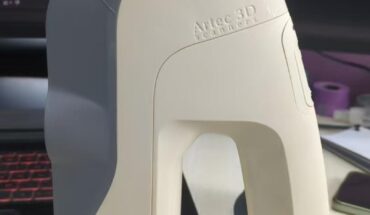In today’s fast-paced world, where remote teams are becoming increasingly prevalent, finding effective ways to collaborate and solve problems is paramount. Augmented Reality (AR) annotations are a groundbreaking technology transforming remote teamwork. By integrating AR annotations into your remote collaboration tools, you can elevate your team’s problem-solving capabilities to new heights.
Augmented reality (AR) for remote troubleshooting and issue-solving has advanced dramatically over the last decade. The ease of visual communication it provides in an immersive, shared environment has prompted organizations to use its capabilities to optimize distant operations and boost labor efficiency.
Augmented Reality annotations involve overlaying digital information onto the real world through devices such as smartphones, tablets, or AR glasses. This technology lets users see and interact with virtual objects or data superimposed on their physical surroundings. Remote teams, can annotate and highlight areas of interest in real-time, bridging the gap between virtual and physical workspaces.
The Technology Behind AR Annotations
AR annotations leverage advanced technology such as computer vision, simultaneous localisation and mapping (SLAM), and 3D modelling. Together, these technologies provide a seamless merging of digital and analogue components, increasing communication efficacy and intelligibility. AR annotations improve the intuitiveness and interactiveness of distant problem solving by placing information in a spatial context.
1. Enhanced Visual Communication
Imagine trying to explain a complex issue over a video call. Words alone may not convey the problem effectively. AR annotations solve this by allowing team members to draw directly on the problem area, highlight crucial components, and add context-specific notes. This visual approach enhances understanding and reduces the potential for miscommunication.
2. Real-Time Collaboration
With AR annotations, remote team members can collaborate in real time as if they were in the same room. Whether it’s pointing out a specific detail on a blueprint, annotating a software interface, or demonstrating a product feature, AR enables simultaneous interaction. This fosters a more dynamic and engaged collaboration process, driving quicker and more effective problem resolution.
3. Improved Problem Analysis
Complex situations frequently need a thorough investigation. AR annotations enable teams to overlay several data layers, evaluate alternative situations, and visualise potential solutions in a more dynamic way. This aids in breaking down complex challenges into smaller components, resulting in more accurate and informed decision-making.
4. Increased Efficiency and Productivity
AR annotations speed up problem-solving by making it more interactive and immersive. Teams can immediately identify and resolve issues, saving time spent on long explanations and back-and-forth communication. This efficiency leads to speedier project completion and higher overall production.
1. Choose the Right AR Tool
Selecting the right AR tool is crucial for successful implementation. Look for tools that offer robust annotation features, easy integration with your existing workflow, and compatibility with various devices. Popular AR platforms like Microsoft’s HoloLens, Google’s ARCore, or Vuforia can be great starting points.
2. Train Your Team
Proper training is essential to maximizing the benefits of AR annotations. Ensure that your team is well-versed in using AR tools and understands how to utilize annotations effectively. Providing comprehensive training sessions and resources will help in the smooth adoption and optimal use of the technology.
3. Integrate with Existing Tools
Seamless integration with your current collaboration tools and platforms is key to enhancing productivity. Ensure that the AR annotation tool you choose integrates well with project management software, communication platforms, and other tools your team uses. This integration will help in creating a cohesive and efficient remote working environment.
4. Encourage Adoption and Feedback
Fostering a culture of innovation involves encouraging your team to actively use AR annotations and provide feedback. Review the technology’s effectiveness regularly and make adjustments based on user experiences. This feedback loop will help continuously improve the way AR annotations are utilized and ensure that they meet your team’s needs.
1. Technical Limitations
Despite its potential, AR technology can have technical limitations, such as device compatibility issues or network requirements. To avoid disruptions, ensure that your team has access to suitable devices and reliable internet connections. Address any technical concerns promptly to maintain smooth operations.
2. Data Security
Data security is crucial when working with sensitive information. To safeguard your data, choose augmented reality products with strong security features. Data provided via AR annotations should be protected by strict access restrictions and encryption procedures.
AR annotations represent a significant leap forward in remote collaboration, offering a more interactive, efficient, and engaging way to solve problems. As technology continues to evolve, the potential applications for AR in remote teamwork will expand, further enhancing how teams interact and resolve challenges. By adopting AR annotations, you position your team at the forefront of this exciting technological advancement, ready to tackle the complexities of modern work with enhanced clarity and precision.
Embrace the power of AR annotations- and watch as your remote team transforms problem-solving from a daunting task into a dynamic and collaborative process. The future of remote teamwork is here, and it’s more immersive than ever.
Read More – How AI is changing remote support software: A simple guide
Adopting AR annotations is about revolutionising problem-solving and collaboration within your remote teams, not merely about incorporating a new technology. This creative solution solves the problems of distant communication with unmatched efficacy by bringing visual clarity, real-time interactivity, and improved analytical capabilities to your virtual office. Giving your staff access to AR annotations will enable them to address complicated problems more accurately and effectively, creating a more engaged and effective work environment.
Using augmented reality (AR) technology can give your team a major competitive advantage as remote work continues to develop and empower them to confidently and nimbly overcome obstacles. AR annotations are setting the standard for remote communication, and the future seems very promising. Invest in this game-changing technology to open up new avenues for problem-solving and boost team productivity to unprecedented levels.
Frequently Asked Questions (FAQs)
How does AR annotations enhance remote collaboration?
By enabling team members to engage with digital information superimposed over their physical surroundings, augmented reality annotations improve remote communication. With the use of this technology, users may immediately draw, highlight, and annotate on the item or document under discussion, which helps people comprehend difficult ideas and concepts. Interacting with these annotations in real time makes communication across virtual and physical workplaces more dynamic and efficient.
What are technical requirements for using AR annotations?
You need appropriate devices, including smartphones, tablets, or AR glasses that enable AR technology, in order to use AR annotations properly. Furthermore, real-time cooperation requires a reliable internet connection. Make sure the AR tool you select works well with the project management and collaboration tools you already have. Reviewing the technical requirements before to deployment is crucial since they might change based on the features and AR tool.
How does my team get started with AR annotations?
To get started with AR annotations, choose an AR tool that meets your team’s needs and interacts seamlessly with your current workflow. Provide training sessions to introduce your staff to the tool’s capabilities and functions. Ensure that your devices satisfy the technical criteria for AR annotations, and develop a plan for incorporating the tool into your current collaboration activities. Encourage feedback and change your strategy depending on user experiences to get the most out of AR technology.





